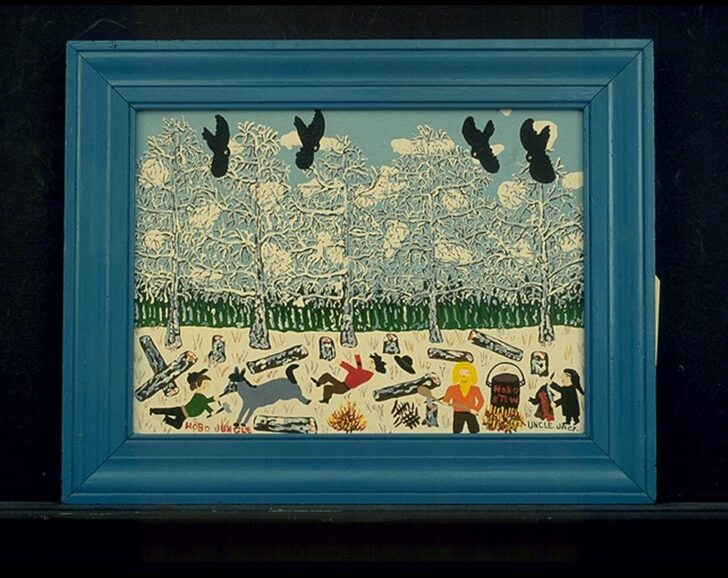Hobo Jungle
Uncle Jack Dey

Description
John Williams “Uncle Jack” Dey
United States, 1912–1978
Hobo Jungle
1955–78
Model airplane paint on composite board
Gift of the Daniel and Harriet Fusfeld Folk Art Collection, 2002/1.177
“Uncle Jack” Dey started painting after an early retirement from the Richmond, Virginia, police force at age 43. Dey made his paintings to fit second-hand frames that he found in local shops, and painted both the paintings and frames with model airplane paints, which create the bright, shiny colors and gloss you can see here. Most of Dey’s paintings display traces of his lumberjack days in rural Maine after high school. Dey was known for his “seriocomic” style: a combination of serious themes, such as homelessness, with surprisingly comic and lighthearted imagery.
(Out of the Ordinary, 2010)
Subject Matter:
Having worked as a trapper and logger as a young man in Maine, Dey often depicted scenes from this experience. The artist received his nickname, Uncle Jack, from neighborhood children whose toys he repainted and repaired, and the paint used to repair toys is likely the same used in his paintings. Dey was known for his “seriocomic” style: a combination of serious themes, such as homelessness, with surprisingly comic and lighthearted imagery.
Physical Description:
This painting shows a landscape with white trees in the background, and men in the foreground; some of the men hold tools in their hand. The men are amongst tree logs. A large pot cooks over a campfire and is labeled in red paint "HOBO STEW". There are four black birds flying in the sky, and a gray donkey stands next to one of the men. The painting is titled in red paint (l.l.) "HOBO JUNGLE" and signed in black paint (l.r.) "UNCLE JACK".
Usage Rights:
If you are interested in using an image for a publication, please visit https://umma.umich.edu/request-image/ for more information and to fill out the online Image Rights and Reproductions Request Form.